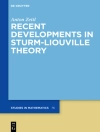The idea of this book came to us in October 2002 at the international conference “Production systems design, supply chain management and logistics” (Miedzyzdroje, Poland). This conference was organized by an initiative group from certain French and Polish Universities with the objective to find a new synergy and to develop a Pan European (West – East) cooperation in the areas of: Design of production systems Supply and inventory management Production planning and scheduling Facility location, transportation and logistics Supply chain optimisation via simulation The conference was focused on a wide spectrum of optimisation problems taking into account Supply Chain paradigms, which create a pivotal idea to increase the productivity of modern production systems. The editors proposed to the group members, to present their results for this book. Some well-known scientists agreed also to participate in this work and sent us their contribution. The main idea of this book is that now, it is necessary to consider all the stages of product life cycle in an integrated approach, from the product/process design to the customer delivering. For example at the product design stage, we need to analyse and to optimise all the supply chain. The book is composed of 20 chapters divided into three parts.
สารบัญ
Modelling Techniques.- An Initiative for International Consensus on Enterprise Inter- and Intra-Organisational Integration.- Towards Knowledge Logistics in Agile SME Networks.- A Modelling Framework for Human Resource-Based Business Processes.- Managing Service-Sensitive Demand Through Simulation.- Robust Modeling of Consumer Behaviour.- Sizing, Cycle Time and Plant Control Using Dioid Algebra.- Concurrent Processes Flow Prototyping.- Modelling of the Supply Chain for a Distributed Publishing Enterprise.- Optimisation Methods.- Hybrid Methods for Line Balancing Problems.- Stability of Optimal Line Balance with Given Station Set.- Simple Plant Location Problem with Reverse Flows.- Concave Cost Supply Management for Single Manufacturing Unit.- Product Family and Supply Chain Design.- Sales and Operations Planning Optimisation.- Response Surface-Based Simulation Metamodelling Methods.- Decision Aid Tools.- A Modeling and Simulation Framework for Supply Chain Design.- Internet Web-Based Integration of Process and Manufacturing Resources Planning.- Visual Representation of Material Flows in Chemical Plant Systems.- Identification-Based Condition Monitoring of Technical Systems.- Simulation of Distributed Industrial Systems.












